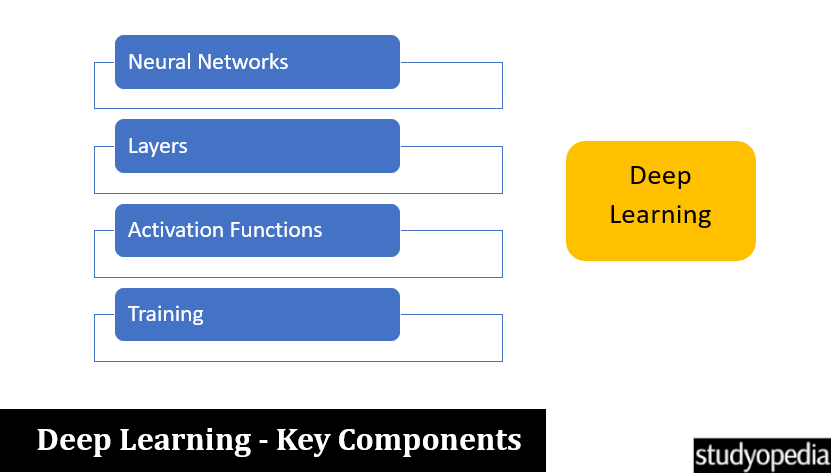05 Oct What is Deep Learning
Deep Learning is a subset of Machine Learning using neural networks to model and solve complex problems. A complex problem is broken down into smaller parts.
Deep Learning includes neural networks with more than one layer, called “deep learning”. It learns complicated representations of data through hierarchical learning processes. Neural Networks are the backbone of deep learning.
Components of Deep Learning

The following are some of the vital components of Deep Learning:
- Neural Networks: It consists of layers of neurons i.e. nodes. Each neuron takes input, applies a transformation, and passes the output to the next layer.
- Layers: Includes the following three layers:
- Input Layer: Receives the initial data.
- Hidden Layers: Intermediate computations and feature extraction are performed.
- Output Layer: The final prediction or classification is produced
- Activation Functions: An activation function determines what is to be done with the neurons i.e. it should be activated or not. Example: ReLU, Sigmoid, etc. Here, ReLU is a Rectified Linear Unit, a non-linear activation function used in deep neural networks.
- Training: This adjusts the neurons’ weights using backpropagation and optimization algorithms to minimize the error between predicted and actual outcomes.
If you liked the tutorial, spread the word and share the link and our website Studyopedia with others.
For Videos, Join Our YouTube Channel: Join Now
Read More:


No Comments